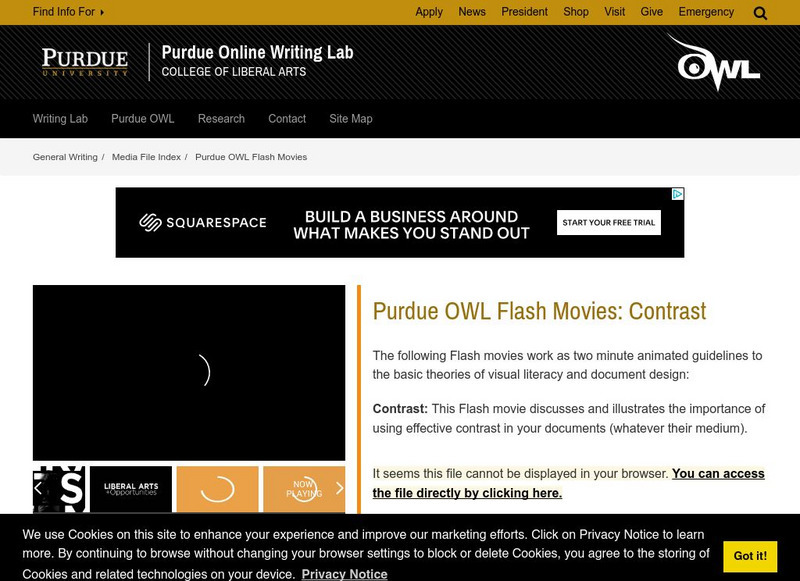Scholastic
Study Jams! Plant Cells
Eight fine-quality slides depict the cells that make up plants. Viewers will see colorful microscope views of the nucleus, cell wall, vacuole, chloroplasts, tracheids, and pollen grains. The resource would apply in either a cell...
Scholastic
Study Jams! Food Chains
Rhinozilla is Mia's bearded dragon and the focus of this lesson on energy flow in an ecosystem. She uses him to explain the energy pyramid, from producers through third level consumers, and she likens the food chain to a video game. Mia...
Scholastic
Study Jams! The Kingdoms of Life
Zoe and RJ discuss the way scientists classify organisms into five kingdoms. Characteristics of each group are highlighted within their conversation and with text. First-time taxonomists can view the animation at home, take the...
TED-Ed
Is Space Trying to Kill Us?
Taking somewhat of a humorous, paranoid viewpoint, this video explores the question of whether or not space objects are likely to take us out. From asteroids, to the sun dying out, to the Milky Way's supermassive black hole, the...
TED-Ed
How to Think About Gravity
What goes up must come down, but there is more to the phenomenon than meets the eye! As it turns out, any two objects attract to each other. The formula for Newton's law of universal gravitation is introduced in the explanation. A touch...
TED-Ed
Deep Ocean Mysteries and Wonders
A multi-media lecture by oceanographer, David Gallo, increases intrigue about our amazing oceans. He introduces the audience to underwater geology and biology with actual research footage. Where this is not specific to any one area of...
TED-Ed
A Needle in Countless Haystacks: Finding Habitable Worlds
Extraterrestrial life? What makes life possible? What makes a habitable planet? These are the questions explored through this video. Some of the concepts presented include the essentiality of water for life and how its liquid form is not...
TED-Ed
A Rare, Spectacular Total Eclipse of the Sun
According to some ancient Mesopotamians, "The sun was put to shame" during a 14th century total solar eclipse. How can the moon, which is 400 times smaller than the sun, completely cover it? This video demonstrates the answer...
TED-Ed
Free Falling in Outer Space
How do satellites orbit the earth? Technically they are free-falling, but missing Earth's surface! Being explained in great detail and with entertaining animation, these concepts are sure to amaze your starling scientists! Another plus...
TED-Ed
Dark Matter: How Does it Explain a Star's Speed?
Studying spiral galaxies can make your head spin! With this video, find out how astronomers calculate a galaxy's rotational speed, and how the prediction that the outermost stars slow down does not seem to be true. The mystery may be...
Nemours KidsHealth
How the Body Works: Ears
Hear ye, hear ye! Here is a video that comes with an article to read, an interactive quiz, hands-on activities, and worksheets, all about the ear! Chloe and the Nurb take viewers on a virtual tour of the ear, discussing its structure and...
TED-Ed
Four Sisters in Ancient Rome
What was leisurely life like for the young, wealthy women of ancient Rome? Though all records from the period were written by men, this video demonstrates that we are still able to construct some aspects of a woman's daily duties and...
Scholastic
Study Jams! A Day on Earth
It's good thing that it isn't up to RJ to spin the earth on its axis; he can't even keep a basketball spinning! In this video animation, he and viewers learn about Earth's movements in space. One thing to consider before you use this...
TED-Ed
The Moon Illusion
Does the moon change size? It sure looks like it! Two optical illusions are suggested as an explanation: Ebbinghaus and Ponzo. However, there are problems with both of these. Convergence micropsia may answer the question, but many...
Sophia Learning
Sophia: The Impact of Imagery
This lesson focuses on the impact of imagery in writing by adding "umph" to the text and engaging the audiences' five senses. It uses an example of a passage from "Wuthering Heights" and then the same passage with most of the imagery...
Sophia Learning
Sophia: Informational Papers
This tutorial offers 6 videos focuses on writing informative papers; the first video includes general information and the three requirements of all informative papers. The next 5 videos explain one of the following types of informative...
PBS
Pbs Learning Media: Objectifying the Text: Conversations in Literature
See how effective readers utilize literary elements and allusions to critically analyze a text in this one-hour video Objectifying the Text. A group of nine experienced educators examine the process of envisionment building as they...
Sophia Learning
Sophia: Analyze the Impact of the Point of View
Notes describing a three-step process to analyze the impact of the point of view on a literary text. Notes can be both read and listened to.
Online Writing Lab at Purdue University
Purdue University Owl: Visual Rhetoric: Contrast
Click through this video tutorial to learn how to make multimedia presentations more effective by using visual contrast in color, shapes, sizes, and backgrounds.
Other
Cult of Pedagogy (You Tube): Teaching Text Structures for Non Fiction Reading
This video from Jennifer Gonzalez's Cult of Pedagogy provides step-by-step instructions for guiding students to understand how to determine text structures.
Sophia Learning
Sophia: Starting With the Text
This lesson offers reasons why some students prefer to read the text before reading the questions when asked to answer questions. It offers this information in text and audio formats.
eSpark Learning
E Spark Learning: Comparing and Contrasting Points of View Framing Video
By the end of this "quest", you will be able to compare and contrast different points of view in a text by reading "Gulliver's Travels" and telling the story from a different point of view. [1:10]


















